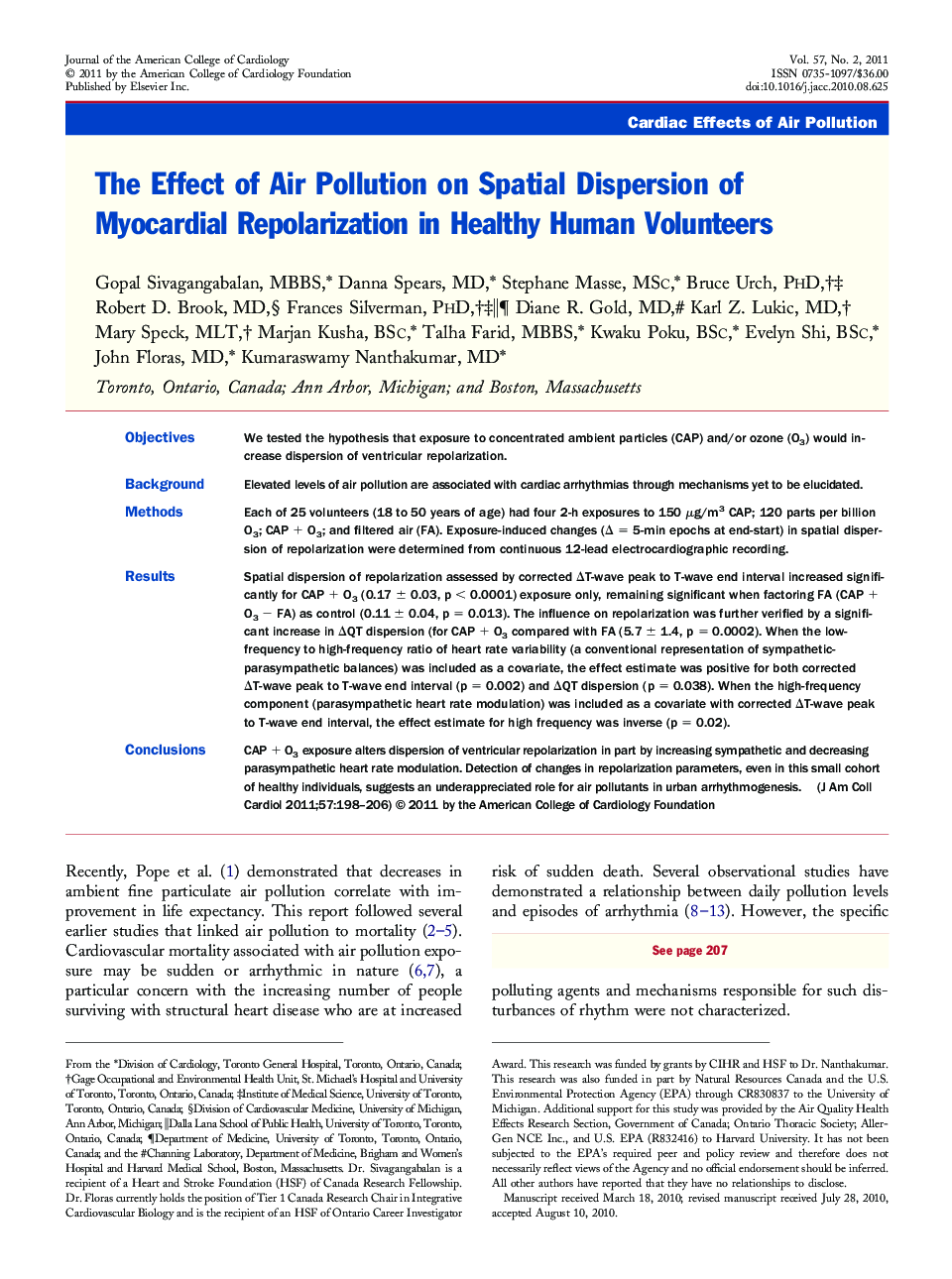| کد مقاله | کد نشریه | سال انتشار | مقاله انگلیسی | نسخه تمام متن |
|---|---|---|---|---|
| 2949943 | 1577283 | 2011 | 9 صفحه PDF | دانلود رایگان |

ObjectivesWe tested the hypothesis that exposure to concentrated ambient particles (CAP) and/or ozone (O3) would increase dispersion of ventricular repolarization.BackgroundElevated levels of air pollution are associated with cardiac arrhythmias through mechanisms yet to be elucidated.MethodsEach of 25 volunteers (18 to 50 years of age) had four 2-h exposures to 150 μg/m3 CAP; 120 parts per billion O3; CAP + O3; and filtered air (FA). Exposure-induced changes (Δ = 5-min epochs at end-start) in spatial dispersion of repolarization were determined from continuous 12-lead electrocardiographic recording.ResultsSpatial dispersion of repolarization assessed by corrected ΔT-wave peak to T-wave end interval increased significantly for CAP + O3 (0.17 ± 0.03, p < 0.0001) exposure only, remaining significant when factoring FA (CAP + O3 − FA) as control (0.11 ± 0.04, p = 0.013). The influence on repolarization was further verified by a significant increase in ΔQT dispersion (for CAP + O3 compared with FA (5.7 ± 1.4, p = 0.0002). When the low-frequency to high-frequency ratio of heart rate variability (a conventional representation of sympathetic-parasympathetic balances) was included as a covariate, the effect estimate was positive for both corrected ΔT-wave peak to T-wave end interval (p = 0.002) and ΔQT dispersion (p = 0.038). When the high-frequency component (parasympathetic heart rate modulation) was included as a covariate with corrected ΔT-wave peak to T-wave end interval, the effect estimate for high frequency was inverse (p = 0.02).ConclusionsCAP + O3 exposure alters dispersion of ventricular repolarization in part by increasing sympathetic and decreasing parasympathetic heart rate modulation. Detection of changes in repolarization parameters, even in this small cohort of healthy individuals, suggests an underappreciated role for air pollutants in urban arrhythmogenesis.
Journal: Journal of the American College of Cardiology - Volume 57, Issue 2, 11 January 2011, Pages 198–206